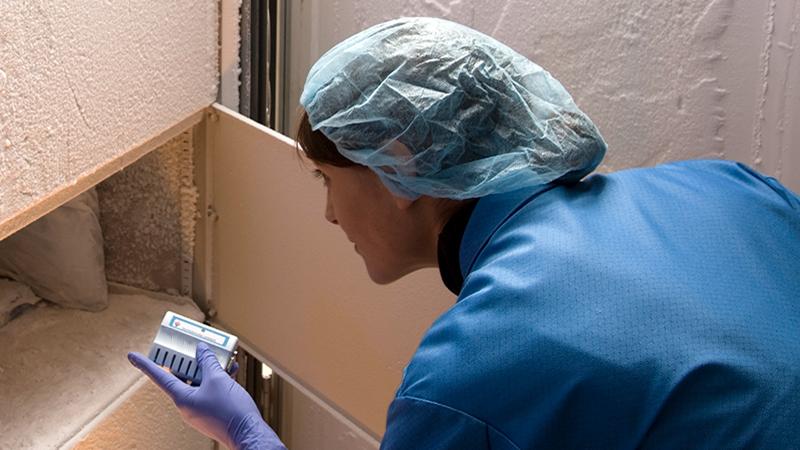Risk-based requalification
4 Questions your Risk Analysis Needs to Answer
Our Senior Regulatory Expert Paul Daniel is happy to answer your questions by email. This week’s blog is from an email exchange between Paul and a Senior Validation Manager of a biopharmaceutical firm.
C wrote: Good Afternoon Paul,
I’ve been performing validation for approximately 26 years, but I have a couple questions about requalifying equipment and creating policies for that procedure. Currently, I’m revising our company procedures for Periodic Review and Requalification. I find that there is a lot of literature to review on requalification for temperature-controlled storage units/areas/stability chambers, etc.
At my former company, we performed mapping annually, which as you know, can be costly and time consuming. I definitely want go to a risk-based approach for our requalification process, but I need some clarity on assessing risk. At first glance, every temperature-controlled unit and area seems critical and therefore in need of annual requalification. However, in my research on risk-based analyses for mapping, that seems not necessarily the case.
We have a continuous monitoring system with its devices calibrated annually. I’m reviewing all of the initial validations to verify all of the proper testing was performed; that’s intuitively a good first step. My question is – what are my next steps in taking a risk-based approach to requalifying?
Specifically, what types of questions do we need to ask in our risk assessments?
I believe we can look at trend history, alarm excursions/frequency/length from the continuous monitoring system. I was also thinking review of the preventative maintenance on the units to check for reliability of things such as motors and door gaskets. I really want a solid Risk Assessment that is defensible under audit and during inspections.
Can you make any recommendations?
Sincerely,
C
Paul wrote: Dear C,
Happy to help. Risk assessments are an important tool. Even better, they can, in some circumstances, save resources.
In case you haven't seen it, we have a webinar on the topic here: Risk Assessment in GxP Environments
The most important rule for risk assessments is that the scoring rules are transparent and clear.
The goal with an RA is to make it clear enough so that you feel confident that another person performing a later risk assessment on the same application will come to the same conclusions. Simply having done a thoughtful risk assessment in the first place will look great to an auditor or inspector – because it is important information about your controlled area(s).
A good place to start is to create scoring rules. For example, what is the main function of the environment? Is it used to store expensive product, or replaceable lab reagents? Another aspect to look at are the specifications of the environment. Does it have tight control specifications (I.E.: stability chambers)? Or is it a single critical parameter environment (I.E.: -80°C ultra-low freezers)?
Three focal points for scoring risk:
• What is stored?
• What are the specifications?
• What is the area’s mapping history?
Regarding the mapping history, I would defer back to a body of knowledge on calibration intervals. In my experience, there is a surprising lack of knowledge about this in the pharmaceutical industry. But, you actually do not have to calibrate something every year just because the manufacturer recommends it. If the device is functioning well within its accuracy specifications at every calibration, then that alone can be a risk-based argument for extending a calibration interval.
We can apply the same logic to chambers – if it maps well and passes every time, perhaps the time between requalification can be extended. The Application note: “Calibration and Adjustment of Humidity Instruments – Pros and Cons of Different Methods” mentions this on page 1, third column, second paragraph.
Categorizing Applications for Risk Assessment
- What is stored in the chamber? For example, are products expensive or cheap? Or, Does the product carry a high risk to a patient if adulterated, or a low risk?
- Are the specifications hard to achieve? Like a stability chamber ±2°C and ± 2%RH or an ultralow freezer at NMT -60°C.
- Would a deviation in conditions or equipment failure be immediately obvious and detectable?
- What is the known, documented history of the area or unit, based on past mapping studies?
You mentioned the trend history of the unit from monitoring system records. Much can be learned from trend history – as we see in this story from a customer. However, that can be similar to a single-point mapping while the unit is being opened and used… And you have to keep repeating this analysis to justify to map or not to map. Creating rules is a good idea.
Let me know if you have any follow-up questions!
Best regards,
Paul Daniel
C wrote: Thank you Paul. We have another challenge…
We have figured out a periodic review schedule on our temperature-controlled rooms, but now we are trying to determine whether temperature requalification it should be done for 24 or 72 hours (initial studies were 72 hours).
Further, should we map under static or dynamic conditions? We are leaning toward a 24-hour static full chamber study because we already have a study on 72 hours of empty chamber and loaded static/dynamic conditions. What we need is simply a verification that everything is still in a qualified state. I’ve searched high and low on the Internet and there is a lot of information about initial qualification (in all aspects of qualification/validation), but little about performing requalification/revalidation. We have looked for guidance from WHO, FDA, EU, etc. but there little to nothing. I appreciate your help and look forward to hearing from you.
Sincerely,
C
Paul wrote: Dear C,
Your research echoes my own. However, one resource I can recommend is the ISPE’s Good Practice Guide for Mapping of Controlled temperature Chambers.
To summarize the relevant parts of that guide, we should remap every 1 to 5 years. We decide the interval based on history and criticality of the application.
We document our findings and use that information to create a risk assessment. The guide also recommends proposed approach; map in a loaded condition with the same sensor locations. Requalifying loaded areas can save a lot of time and effort! Your approach is sound especially if there has been no history of malfunctions or repairs on the unit.


Add new comment